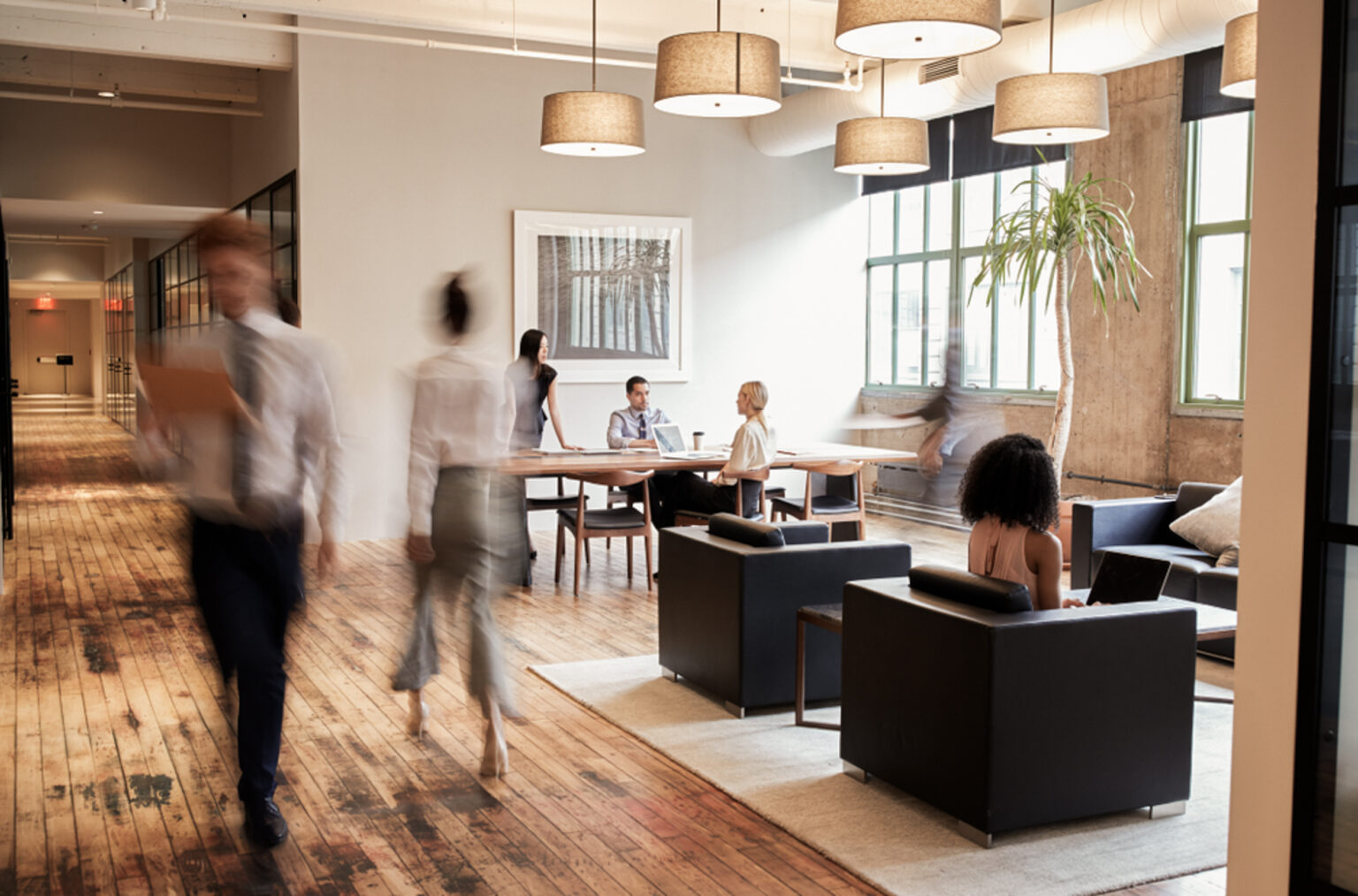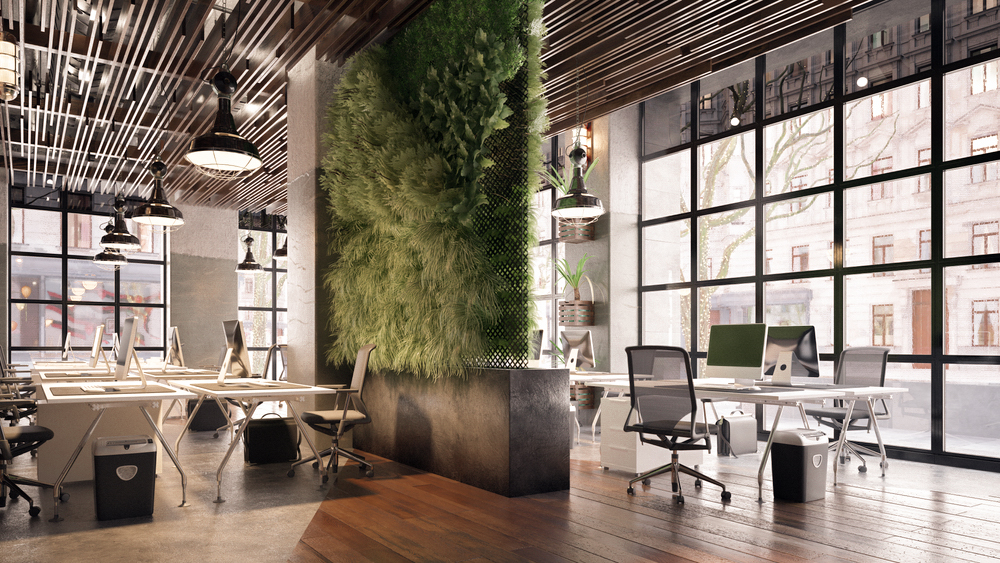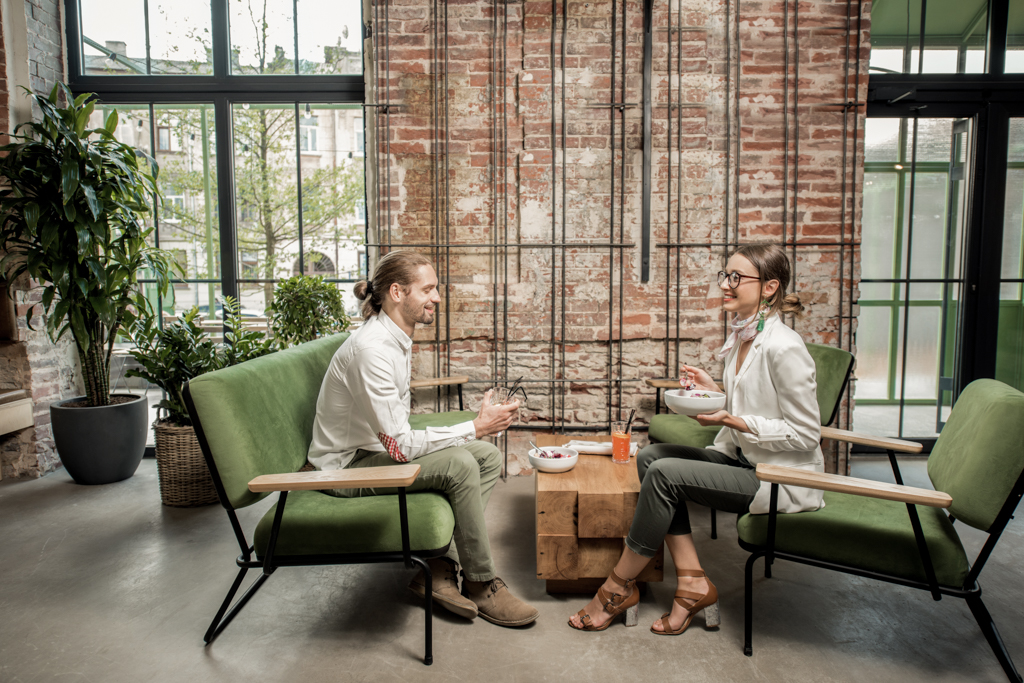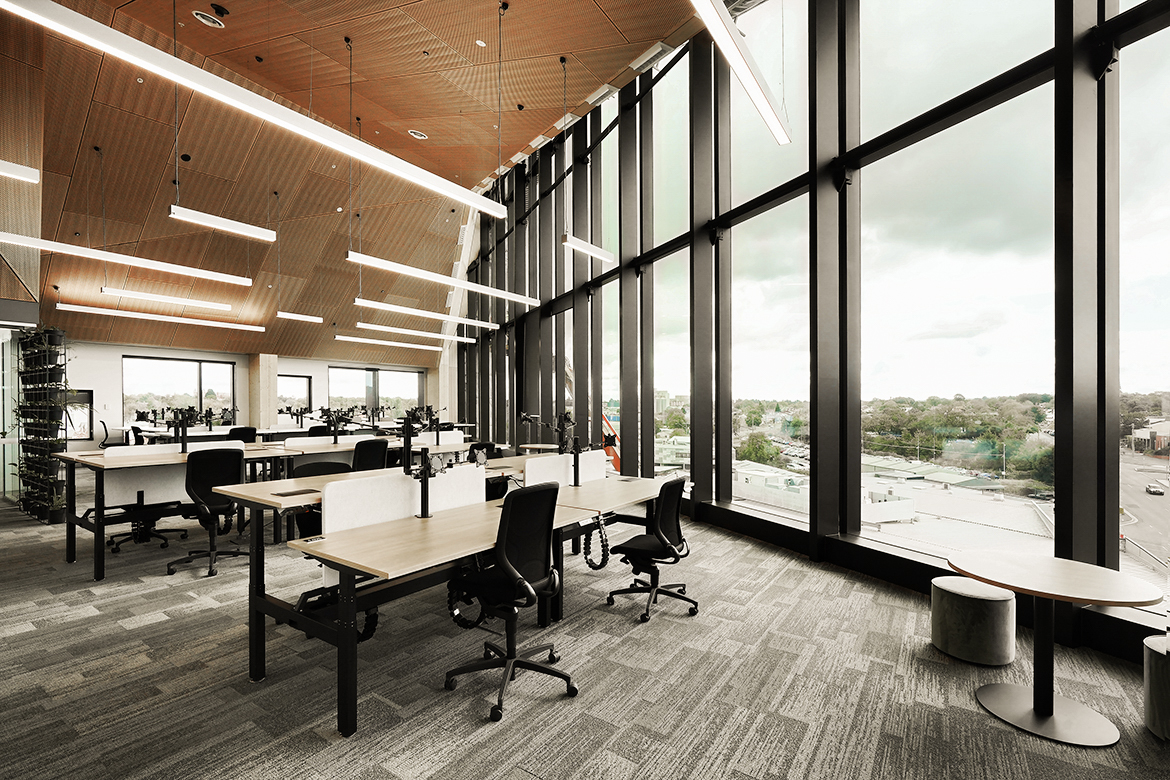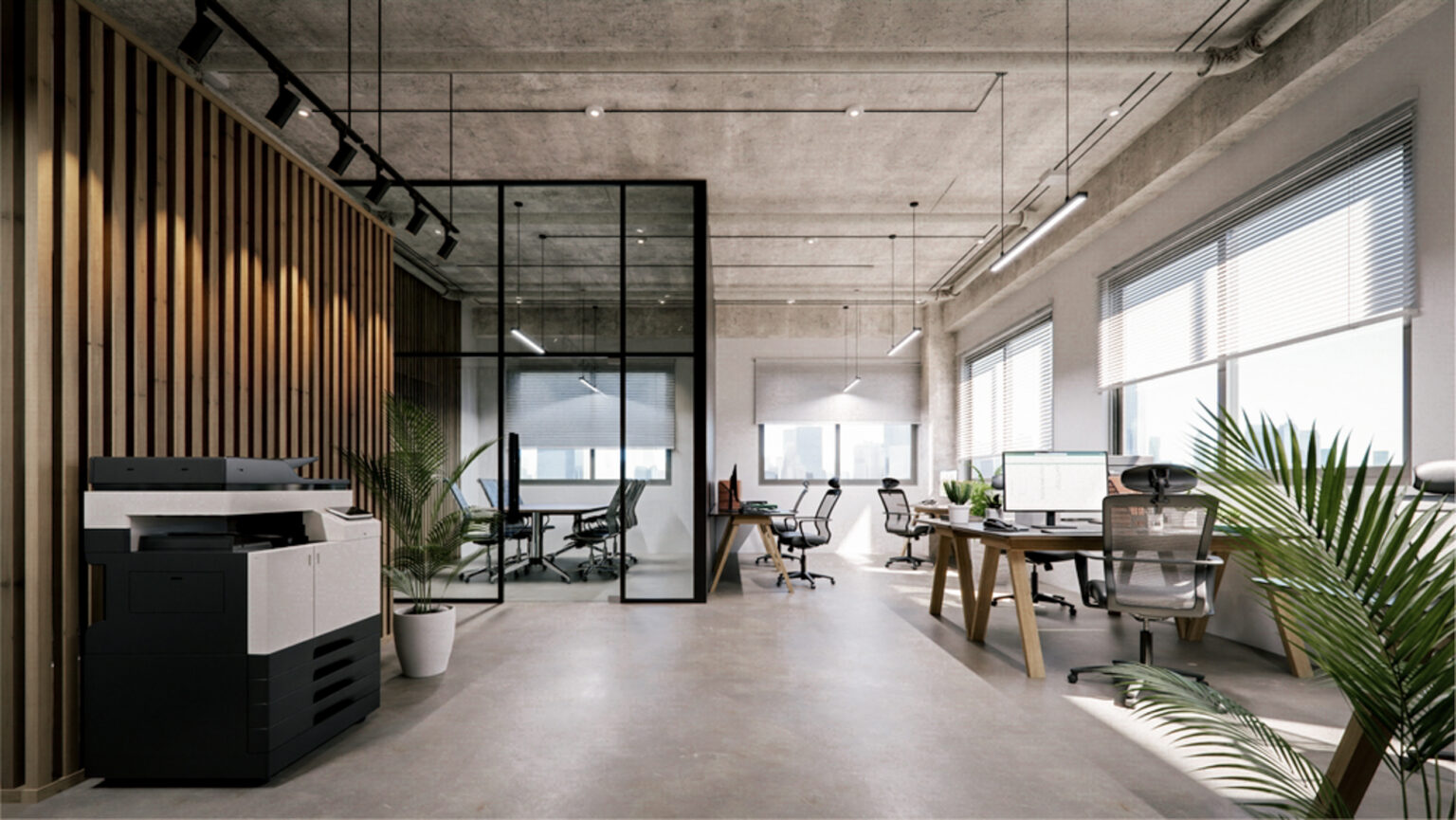Can office design improve your company's brand and culture?

Designing a workplace requires you to go beyond choosing flashy furniture and new gadgets. The office layout, look & feel and sustainable practices also speak about how you want clients and employees to view your brand’s values and work culture.
Your company’s brand and culture are among the main means for shareholders, employees and management to measure the value of a business. They’re clearly important metrics – and the question to ponder in relation to office design is: should office design merely reflect your brand and culture – or does it have an active role to play in improving those measures?
How you design your office says a lot about the company and its operations. It’s often so subtle you don’t evenrealise it, but colours, furniture, and decor can all work together to create an atmosphere that reflects the company’s brand and culture.
That’s why the right office design has many benefits for any business. Here’s what you need to know!
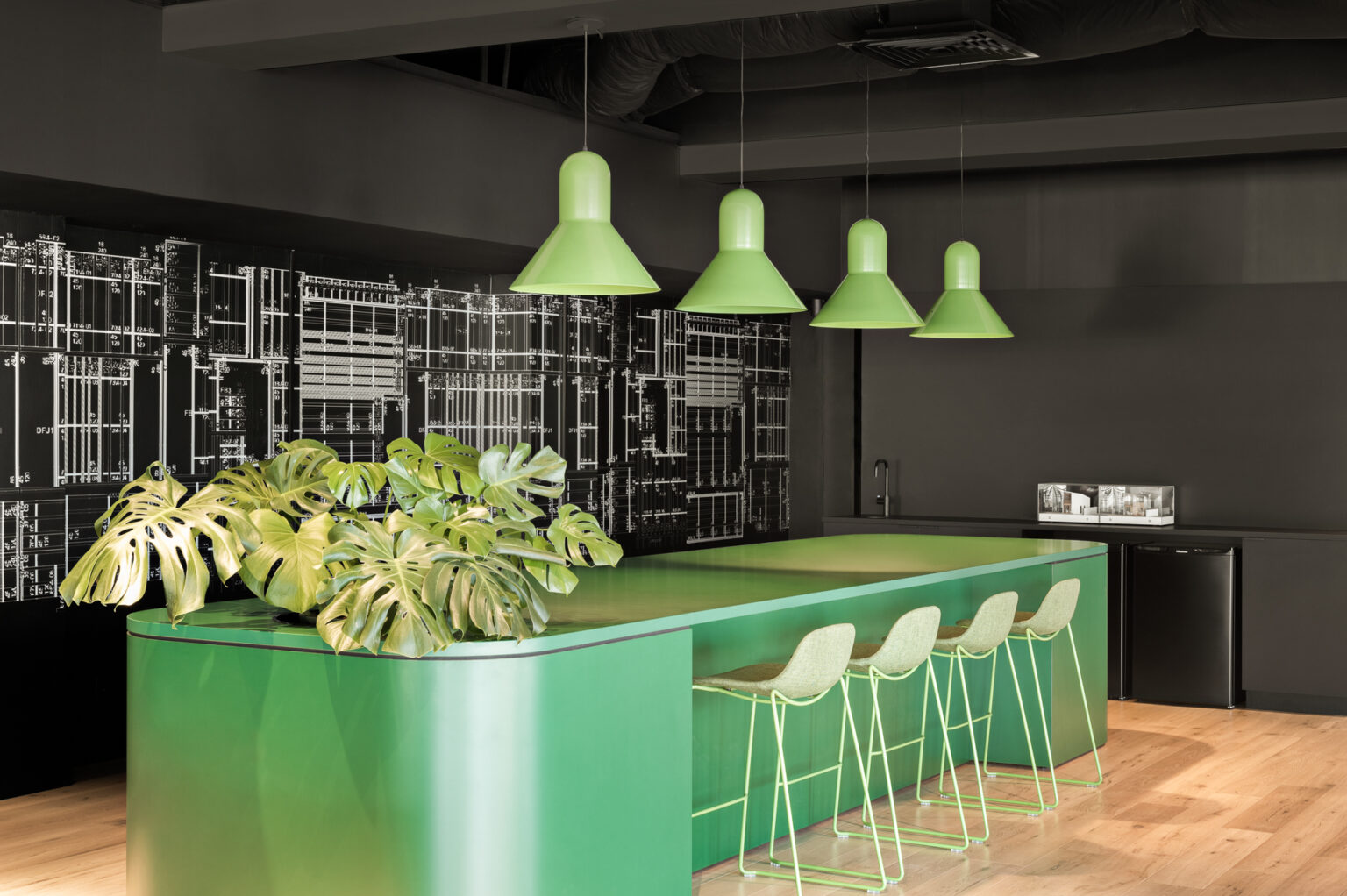
Understanding the connection between office design, brand, and culture
Most high-performance workplaces have one thing in common: an office with infrastructure encouraging employees to fulfil their responsibilities seamlessly. Besides your company’s brand elements like good human relations, you need to create a work environment that will help your staff work efficiently and productively.
When your workplace has a design that coincides with your brand and culture, your work staff will align with company standards. For example, consider open office space designs that bolster interaction if your business emphasises collaboration.
An exquisite office interior design will give your company room for innovation and can bring about a culture of success. Let’s say you own a tech start-up and you are looking to attract clients. Styling your office in a trendy and tech-oriented way will help your chances of landing clients and retaining the ones at hand because it will showcase the company’s innovation and forward thinking.
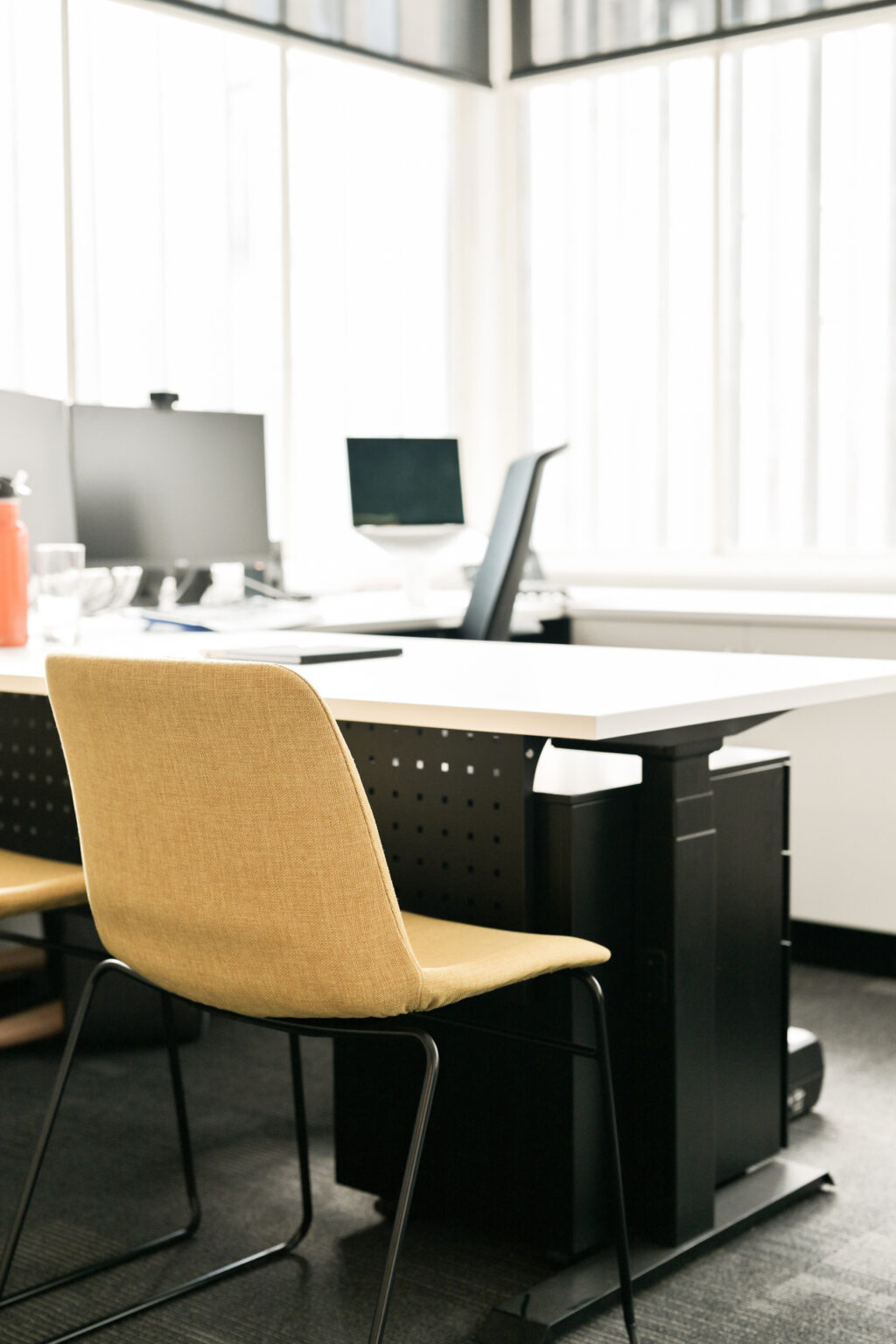
Types of company
culture
According to a study conducted by Haworth, a renowned British company specialising in the correlation between workspace design, human behaviour, and performance, workspaces are treated merely as an expense rather than a catalyst for optimised productivity.
The study also states, “ …..recognising space as a way to support productivity and company goals begins by first defining existing organisational culture, comparing that to desired culture, and then designing workspaces to expressly support the elements needed for change.”
Before you choose how to design your office interior design, you should first define the culture of your organisation. Here is a list of a few cultures in which modern businesses embed themselves:
Control culture
A control company culture, also known as a hierarchical culture, places a high value on structure, rules, and authority. Such a culture focuses on efficiency, stability, and doing things right. This type of culture is common in large corporations, government agencies, and industries where precision and consistency are echoed.
Control cultures often have detailed procedures and rules to guide employees’ actions, covering everything from how tasks should be performed to decisions. Executives evaluate employees on performance metrics and discipline. Examples of companies using this culture include , government agencies, and regulated industries like financial services.
Creative culture
A creative work environment requires a highly adaptable and organic setting that provides relaxation and introspection. Collaborative spaces have an office interior design that is abundant and adorned with tangible manifestations of employee creativity.
An open and unhindered layout is preferred in the rare instances of individual workspaces. The promotion of idea-sharing is fostered, irrespective of hierarchical structures or chains of command. You can find creative cultures in advertising agencies or software start-ups.
Competitive culture
If you’ve ever popped into an office where sales are taking place, whether it’s goods or services, you will realise the culture within such organisations solely lies on results. While being structured, this design requires a balanced allocation of individual and group spaces. It encompasses a combination of formal and informal elements and a moderate level of enclosure in the areas.
A competitive culture work environment ensures optimal space utilisation while maintaining a harmonious and functional environment.
Work-play culture
If you can spot tables with games, pool tables, swimming pools, saunas and gyms in an office, that is most definitely a workplace employing a work-play culture. Meant for the younger generation, such offices harbour businesses where brainstorming, idea pitching, and talent searching take place.
Examples of firms that fit into the work-play culture type are software or app developers, online retailers, creative agencies or some consultancy firms.

How your office design reflects your company’s brand and culture
Your office interior design may be working in your favour if you have the right design features in place, or it could be hurting your brand if there’s a disconnect between how your office looks and feels and what your company stands for.
For instance, here are some aspects of office design ideas and what they typically signify:
Office furniture
The furniture in your office may highlight what your business stands for. When designing a workspace, office furniture choices can shape the overall environment of your business, reflect company values, demonstrate creativity and ingenuity, and accommodate a team’s needs.
For instance, businesses like in Law or Finance might leverage leather sofas with dark wood furniture made from premium woods like mahogany. Such fixtures are designed to indicate to clients or potential clients the prestige, trustworthiness and conservatism of the firm.
Traditional corporate workplace furniture might call for set groupings and adaptive cubicles, but styles can vary from classic to modern to match the business’ culture. Furniture doesn’t need to be expensive to convey messages; what matters is that it aligns with the company’s brand and values.
Office layout
Office layouts dictate a company’s movement, communication channels, and work ethics. So, when making office designs, research what office layout best suits your business. For instance, a company that values open communication and collaboration might opt for an open office layout. The design eliminates barriers between employees, promoting interaction and teamwork.
Businesses that value privacy and individual focus may prefer a traditional layout with separate offices or cubicles. Law firms often use this layout as it allows for confidential conversations and focused work. Others use a corner/private office interior design or physical barriers between workspaces, which may showcase hierarchy or segregation where executives go about their day-to-day.
Tech companies like Google redefine the layouts of their offices by creating flexible spaces that cater to different work styles. They have areas for collaboration, quiet zones for focused work, and recreational spaces for relaxation. This reflects their culture of innovation, adaptability, and employee well-being.
With respect to creating “earth-friendly” work environments, some organisations are integrating elements of nature into their office style, a concept known as biophilic design. It includes incorporating indoor plants, natural light, and views of green spaces, reflecting a company’s commitment to sustainability and employee well-being.
An example of a company , an e-commerce website focused on handmade or vintage items, whose headquarters has a living wall of plants and furniture made from recycled materials.
Colour schemes
The colours used in the office often mirror those in the company’s logo or other branding materials. For instance, if a company’s logo is blue and white, incorporating these colours into the office design can strengthen the brand’s visual identity. Facebook, known for its iconic blue logo, uses various shades of blue throughout its offices.
Judging from the science of colour psychology, different colours can evoke specific emotions or reactions. For instance, blue is often associated with trust and reliability, green with growth and sustainability, and red with energy and passion. A financial institution might use blue in its office walls and themes to convey trust and stability. In contrast, a marketing agency might use red to reflect its energetic and dynamic nature.
Colours also carry some weight in determining an employee’s comfort, well-being and productivity. While light colours such as white, beige, or pastel shades make a space feel larger and brighter, promoting a sense of calm and focus, darker colours can create a cosy, intimate atmosphere.
Introducing bright colours and artwork showcases creativity or a youthful, fun work environment. Neutral colours are typically used to relay a message of professionalism and sophistication.
Therefore, when designing, your priority shouldn’t just be making it look nice; instead, focus on how best to communicate your company’s message through the space.

How office design impacts employee engagement and motivation
Office design generally determines how your employees go about their work, interact among themselves, and communicate with clients. If you provide your workforce with a work environment that is sustainable, comfortable, and eco-friendly, it can significantly boost their confidence, productivity and satisfaction.
For example, if your business employs a culture of teamwork and collaboration, a well-designed open office will go a long way and produce results for you. On the other hand, if your company’s culture involves a lot of private dealings, an office with well-styled, soundproofed offices is the way to go.
In Australia, office environments are frequently associated with open concepts, promoting agile workflows and encouraging employees to explore various work styles. Moreover, most offices in the country harbour exquisite interior design with input from architecture, which is why the business sector in the country is diverse.
You should also consider your employees’ input before selecting a workspace design to foster diversity.

Practical tips for aligning office design with workplace brand and culture
Tell your company’s story
If you haven’t figured it out before, the workplace design of your office tells your company’s history and culture. Therefore, before you lay out the design of your workplace, think about the values, aspirations, and story behind your company.
Does your business revolve around family? Do you value the opinion of your workforce and clients? Do you offer services with utter discretion? Design your office in a way that tells this story.
Art and decor are priceless!
Artwork and decor can be used to convey your story and add personality to your office. For example, greenery can be used to create a calming and refreshing atmosphere in the office for companies that value sustainability and wellness.
Decorative pieces like the “Be Legendary Office Wall Art” not only serve as decor but can also communicate the company’s ethos to employees and visitors. You can also place motivational quotes on walls and the front desk to inspire the work staff to work harder and convey the company’s mission.
Use brand colours and symbols
Your company brand is the first thing clients see before they set foot inside any of your offices, and this is why it is very important to paint a picture that you can live up to. All the colours, logos, or symbols should relay a message that your employees and clients clearly understand.
So how can you use brand colours and symbols that will reflect the company culture? Strive to incorporate your brand colours, logo, and any other symbols associated with your brand into the office interior design.
Additionally, use a consistent brand colour palette throughout your office. This not only reinforces your brand but also creates a visually appealing environment.
Choose styles that reflect your work
Every aspect of your office should reflect your brand’s personality, from the furniture you use to the paint and art on the wall. For example, if you’re a tech company, a modern and sleek design might be appropriate. If you’re an environmental NFP, incorporating natural elements and sustainable materials could tell your story.
Your achievements matter
You can use design elements within your office interior design, including photographs of significant events or company awards, to reflect your company’s history. Not only will this motivate your employees, but it will also show potential clients what your organisation stands for.
Cubicles aren’t everything
Create office designs that suit the cultural values you want to promote. This might mean moving away from traditional cubicles to more open and collaborative spaces. So before making any steps towards office design, consider the nature you want your business culture to revolve around.
Although cubicles might work in privatised work environments, they isolate employees and inhibit the development of a team mentality. The isolation can be counterproductive in fostering a collaborative and inclusive company culture.
Redesign your
office today!
Whether you’re just starting out or you’ve been in business for years, it’s never too late to start incorporating your company culture into your office design. We’re here to help.

